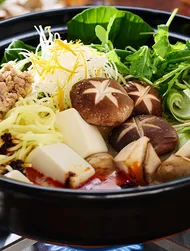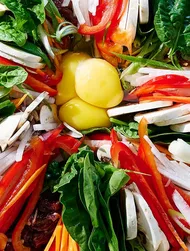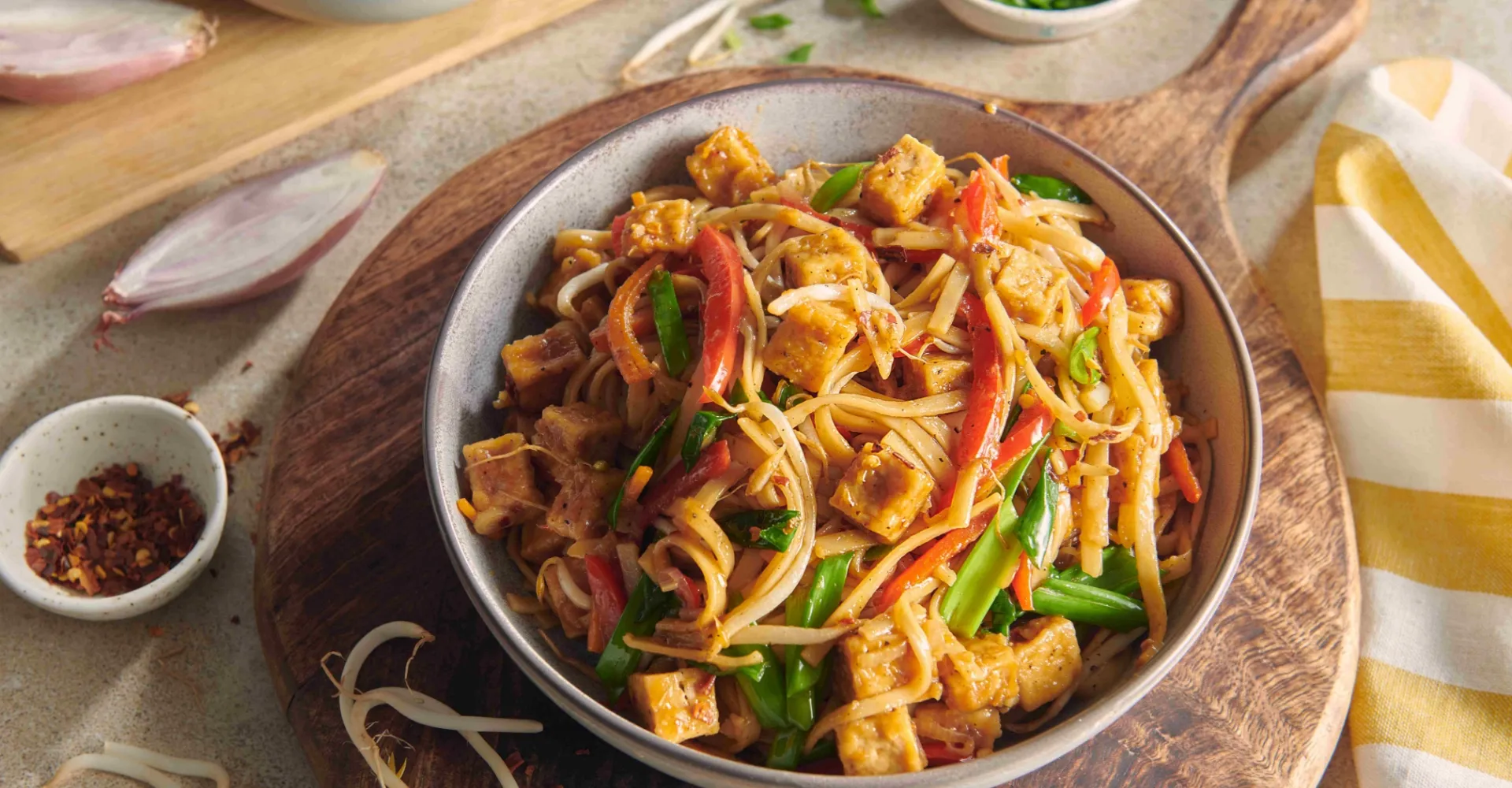

Japanese-style Arroz Meloso
Ingredients
Stock for the squid:
Kombu broth:
Stock for the meloso:
Nutritional facts (per portion):
2,878 kJ / 687 kcalPreparation
Step 1
To make the kombu broth, put the water and kombu seaweed in a bowl and leave to soak for 3 to 4 hours.
Step 2
Finely chop the onions. Heat up the oil in a pan and sauté the onions. Wash the rice and put it in a pan. Add the sautéed onions and kombu broth (identical quantities) and cook until the rice has absorbed all the liquid.
Step 3
Boil the prawns in water, drain and place to one side.
Step 4
Cut the monkfish fillet into 5-6 mm thick slices and blanch in boiling salted water. Then drain well. Put the mussels in a pan and pour a little water over them. Steam with the lid on. Sieve off the water and place to one side. Repeat the procedure for the clams.
Step 5
Then trim the squid and cut it into approx. 4 cm long, 5-6 mm wide slices. Cut the tentacles into approx. 4 cm long pieces. Put the remaining kombu broth and stir-fry sauce into a pan and bring to the boil. Add the squid and cook for around 1 to 2 minutes. Sieve off the stock and place to one side.
Step 6
Cut the Chinese cabbage into approximately 4 cm long and 5-6 mm wide pieces. Then cut the spring onions into rings.
Step 7
Put the stock from the squid, clams and mussels into a pan (or a deep frying pan). Top up to 600 ml with the kombu broth. Season with stir-fry sauce and bring to the boil. Add the Chinese cabbage and the whisked eggs, stirring over heat until the eggs coagulate. Then add the cooked onion rice, all the pre-cooked seafood items (monkfish, clams, mussels, squid and prawns) and bring to the boil. Serve the meloso in deep dishes garnished with the spring onion rings and sansho powder. Season with wok sauce if desired.
Tip
You can buy kombu seaweed in Asia supermarkets. Or you can use chicken or fish stock as an alternative.
Recipe-ID: 130
Recipe as PDF
Download PDFThank you for your feedback!
Let us know what you think
Click on the number of stars you want to give: the more the better!
Discover more

























